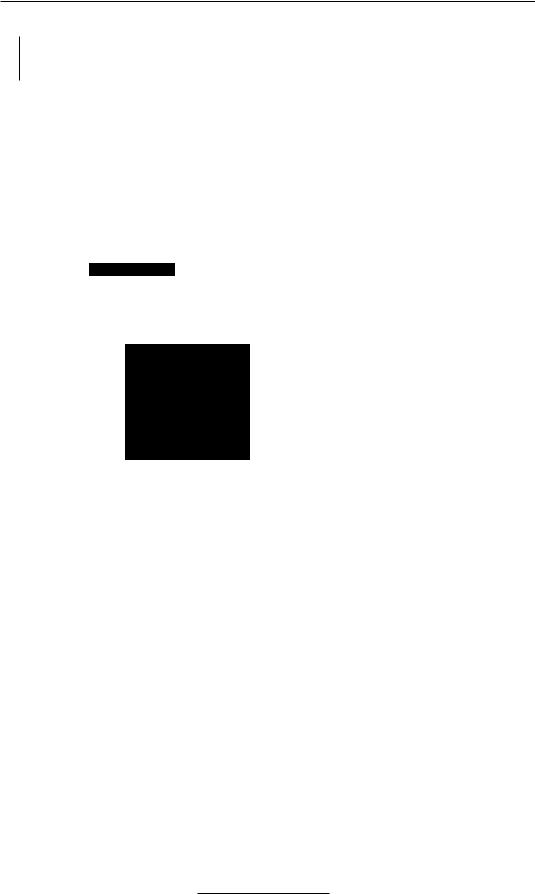
CFA Level 1 (2009) - 2
.pdf
Srudy Session 4
Cross-Reference to CFA Institute Assigned Reading #14 - Efficiency and Equity
LOS 14.f
Utilitarianism is based on the goal of creating the greatest good for society and underlies the argument that wealth should be transferred from the rich to the poor (who presumably get more benefit from it).
The symmetry principle, that people in similar circumstances should be treated similarly, underlies the idea of equality of opportunity and the conclusion that fair rules lead to a fair outcome.
©2008 Kaplan Schweser |
Page 31 |

Srudy Session 4
Cross-Reference to CFA Institute Assigned Reading #14 - Efficiency and Equity
I
CONCEPT CHECKERS
1.If a consumer is willing to pay $20 for a shirt bur only has (0 pay $16, the $4 difference is:
A.consumer surplus.
B.consumer deficie.
C.producer surplus.
2.The marginal benefit from consuming the third unit of a product is $12, and the marginal cost to the producer of the third unit is $8. Under these circumstances, which of the following statemenrs is most accurate?
A.Producer surplus is maximized.
B.The efficienr quanrity is less th~n th ree.
C.Producing ~nd selling the (hird unit will increase efficiency.
.). |
The ide;] thar a compnitiv<:' marker allocH<:'> r<:'s()urce~ Llirly as long ;lS rhe sanlL" |
|
|
rules app'" (() ;dl parri(il),llll~ is,uggcsred hI': |
|
|
;\, |
urilirarianism. |
|
B. |
rhe fairness principle. |
|
C. |
the symmerry principle. |
In ~n unregulared competitive m~rkc'r. which of rhe follo'>ving conditi:1I1S 111m! accuratt:~l' describes the condition that exists whl:n rhe efficienr quanr":' at" J good or service is produced and cGnsumed~
A.Producer surplus is maximized.
B.Consumer surplus equals producer surplus.
C.The sum of consumer surplus and producer surplus is maximized.
5.Producer surplus is best defined as the:
A.number of units by which the supply is greater than the quantity demanded by consumers.
B.the sum of the differences berween the price of each unit of a good and its opportunny cose.
C.amounr by which the price of (he next unit of a good exceeds the consumer's marginal benefir from the good.
6.Which of the following sratemenrs most accurateL)! describes what will occur in
an unresrricred economy when tastes change so thar marginal benefit exceeds marginal cost ar the currenr quanrit)' produced and sold of a good or service~
A.The quanrity consumed will decrease.
B.The quanrit)' of the good or service produced will increase.
C.The quanrity of other goods and services produced will increase.
7.Which of the following is Least Likely an obstacle to the efficienr allocation of resources?
A.Price deregulation.
B.Taxes, quotas, and subsidies.
C.Public goods and common resources.
1ge 32 |
©2008 Kaplan Schweser |

Study Session 4
Cross-Reference to CFA Institute Assigned Reading #14 - Efficiency and Equity
8.As the demand (marginal benefit) curve becomes less elastic, if the equilibrium price and quantity remain unchanged, consumer surplus:
A.decreases.
B.Increases.
C. remains unchanged.
©2008 Kaplan Schweser |
Page 33 |

Srudy Session 4
Cross-Reference to CFA Institute Assigned Reading # 14 - Efficiency and Equiry
ANSWERS - CONCEPT CHECKERS
I.A If a consumer is willing (0 pay $20 for a shirr bur only pays $16 for rhe shirr, rhe $4 difference is consumer surplus. The consumer surplus plus rhe marker price equab the (Oral value of the product to the consumer.
2.C When marginal benefit exceeds marginal cosr, increasing the quanriry of rhe good produced improves alloc;lrive efficiency.
3.C The symmetry principle holds rhar people in similar siruarions should be treared similarly. It implies thar the market allocares resources fairly if rhe rules rhar marker~
operare by are eguirable.
4.C When rhe efficienr quantiry is produced. rhe sum of consumer surplus and producer
surplus is maximized.
(1. ulHestriuu! n:onOJl1\', rht' t'ftlcicnl Cjllalllill' i, tlll" olle fur \\'hich the Ill.lrt:in,rl benefit cqual~ the marginal cost. \\'hcn marginal bcnefit is t:re;lrer rhan marginal COSI .11 a t:ivell Cluantin·. producers will produce morc sincc conSUJl1t'1"s arc willint: to pa\' IllOrt' dun rhc COSl or I'roducrion.
A Price deregul:lt:o[) remov(:'s an ohsracle t<J rhe enicienl :111ocariun or resourccs.
K.B Refer to r-igure "'I.You can see rhat rhe are;l of rhe rrianl-'k th.lt represents consumer
surplus increases as rhe sreepness of rhe demand \marginai benefit) curve increase~ at ;1 given equilibrium price and quanrity
Page 34 |
©200R K~nbn Srhwp<pr |

The following is a review of the Economics princjples designed to address the learnjng outcome statements set forth by CFA Institutc®. This topic is also covered in:
MARKETS IN ACTION
Study Session 4
EXAM Focus
This revIew exammes how market equilibrium is affected by price ceilings, minimum wages, taxes, subsidies, quotas, and trade in illegal goods. For each of these you should know how supply, demand, and the resulting market equilibrium price
and quantity are affected. It is important to understand why economists believe that, in general, interference with market forces causes economic inefficiency (an inefficient allocation of resources).
LOS IS.a: Explain market equilibrium. distinguish between long-term and short-term impacts of outside shocks, and describe the effects of rent ceilings
011 the existence of black mukets in the housing sector and on the market's efficiency.
Market equilibrium, as we saw in the previous topic review. occurs at the price where the quantity supplied is equal to the quantity demanded.
Outside shocks, such as natural disasters, can temporarily interrupt the supply of goods or services. In panel (a) of Figure 1 this is shown as a shift to the left in the short-
run supply curve. The short rlm is the period in which producers cannot adjust their capacity. Assuming the outside shock does not affect demand, the reduction in supply results in a higher equilibrium price and lower equilibrium output in the short run.
In the long term, when producers can adjust capacity. they find that the highl'r price is an opportunity to profit by increasing their output. The resulting higher output quantity drives the equilibrium price lower again. Other things equal, in the long run both price and quantity can return to their equilibrium levels prior to the outside shock as shown
in panel (b) of Figure 1.
©2008 Kaplan Schweser |
Page 35 |

Study Session 4
Cross-Reference to CFA Institute Assigned Reading # 15 - Markets in Action
Figure 1: Impact of an Outside Shock
(a) Shorr-term impact
Price
Supply after outside shock
Supply before outside shock
Equilibrium price increases in shan run
:. |
---: |
Demand |
|
, |
, |
|
|
------ |
' ------- |
' -------- |
Oll.lllli:\ |
Equilihrium
quamirv decreases in shan run
(b) Long-term impact
|
|
|
Supply after |
|
|
|
outside shock |
|
|
|
(before producers adjust) |
|
|
|
SupplY after |
|
|
/ |
produce~s adjust |
Increased output |
- --1- |
----------.- --- |
|
causes pnce to |
|
|
|
decrease |
|
|
|
|
|
|
|
: |
: |
Demand |
|
||
|
, |
|
-------- ' ---- |
' |
-------- Qu;]nriry |
Producers respond to higher price by increasing output
An example of a supply shock from a disaSter is an earrhyuake that destroys a significant portion of the housing srock in an area. Initially, rents rise because of the decrease in supply. Over time, spare rooms and garages are converted to rentable housing and new units of housing are constructed in response ro the price increase. This accounts for
the increase in supply over time; prices eventually fall ro prior levels as more supply is created. However, increasing rents often bring calls for authorities ro intervene in the market by imposing price controls. Limiting how high rents can go decreases the incentive ro create more housing units in the short run.
Page 36 |
©200R K:mbn Srhwf'<f'r |

Study Session 4
Cross-Reference to CFA Institute Assigned Reading # 15 - Markets in Action
A price ceiling is an upper limit on the price which a seller can charge. If the ceiling is above the equilibrium price, it will have no effecr. As ilJustrated in Figure 2, if the ceiling is below the equilibrium price, the result wilJ be a shortage (excess demand) at the ceiling price. The quantity demanded, ~, exceeds the quantity supplied, Q.
Consumers are willing to pay Pws (price with search COSts) for the Q quantity suppliers are willing to sell at the ceiling price, Pc' Consumers are willing to expend effort with
a value of P ws - Pc in search activity to find the scarce good. The reduction in quantity exchanged due to the price ceiling leads to a deadweight Joss in efficiency as noted in Figure 2.
Figure 2: Price Ceiling
Price
|
demand |
|
sup pI\' |
|
|
|
~ |
.. |
|
|
|
/ |
- Deadweigh [ los, |
|
|
|
,./ |
|
|
|
|
""-, |
|
|
f------ |
:7I""----- |
''''-r-:,--.,-, ceiling: price (ma.,imum) |
||
~---- |
'------- |
|
'---------- |
[)11;1111 if'.' |
|
Q, |
|
|
|
\X1ith an effective price ceiling, price is no longer an effective means of rationing the good or service. In the long run, price ceilings lead to the following:
•Consumers may have to wait in long lines to make purchases. They pay a price (an
opportunity cost) in terms of the time they spend in line.
• Suppliers may engage in discrimination, such as selling to friends and relatives firsr.
•Suppliers "officially" sell at the ceiling price, but take bribes to do so.
•Suppliers may also reduce the quality of the goods produced to a level commensurate with the ceiling price.
In the housing market, price ceilings are appropriately called rent ceilings or rent conuol. Rent ceilings are a good example of how a price ceiling can distort a marker. Renters must wait for units to become available. Renters may have to bribe landlords to rent at the ceiling price. The quality of the apartments will fall. Other inefficiencies can develop. For instance, a renter might be reluctant to take a new job across town because it means giving up a rent-controlled apartment and risking not finding another (rentcontrolled) apartment near the new place of work.
A black market refers to economic activity that takes place illegally. This includes selling goods at prices that exceed legally imposed price ceilings. Bribing a landlord to get a rent-controlled apartment is an example of black market activity. Another way for a landlord to charge rent that exceeds the rent ceiling is to "officially" rent at the
ceiling, then charge excessive fees for items such as mailboxes, keys and locks, or window treatments.
©2008 Kaplan Schweser |
Page 37 |

Study Session 4
Cross-Reference to CFA Institute Assigned Reading #15 - Markets in Action -
A black market is generally inefficient because:
•Contracts are not as enforceable.
• The risk of prosecution increases the prices required by suppliers.
•Quality control deteriorates, which leads to more defective products.
LOS 15.b: Describe labor market equilibrium and explain the effects and inefficiencies of a minimum wage above the equilibrium wage.
A price floor is a minimum price that a buyer can offer for a good, service, or resource. If the price floor is below the equilibrium price, it will have no effect on equilibrium price and quantity. Figure 3 illustrates a price floor that is set above the equilibrium price. The result will be a surplus (excess supply) at the floor price, since the quantit~, supplied. Q, exceeds the quantity demanded. Qd' at the floor price. There is a loss of efficiency (deadweight loss) because the quantity actually transacted with the price floor.
Qd'is less rhan the efficicnr equilihrium quanrit\'. Q,.
Figure 3: Impact of a Price Floor
"ric:<:
demand |
supply |
|
/ |
|
I |
1 ------ '> . ---------- 1; ------ floor price (minimum) |
|
|
"It:"~'lo.."-----,r-- Deadweight loss |
"--.---lQ-d----=Q-,------::!Q=-,-------- QuantiC}'
In the long run, price floors lead to inefficiencies:
•Suppliers will divert resources to the production of the good with the anticipation or
selling the good at the floor price, but then will not be able to sell aU they produce.
•Consumers will buy less of a product if the floor is above the equilibrium price and substitute other, less expensive consumption goods for the good subject to the price floor.
In the labor market. as in all markets, equilibrium occurs when the quantity demanded (of hours worked. in this case) equals the quantity supplied. In the labor market, the equilibrium price is calJed the wage rate. The equilibrium wage rate is different for labor of different kinds and with various levels of skill. Labor that requires the lowest skill level (unskilled labor) generally has the lowest wage rate.
In some places, including the United States, there is a minimum wage rate (sometimes defined as a "living wage") that prevents employers from hiring workers at a wage
less than the legal minimum. The minimum wage is an example of a price floor. At a minimum wage above the equilibrium wage, there will be an excess supply of workers, since firms cannot employ all the workers who want to work at that wage. Since firms
Page 38 |
©2008 Kaplan Schweser |

Study Session 4
Cross-Reference to CFA Institute Assigned Reading #15 - Markets in Action
must pay a[ least [he minimum wage for the workers, firms substitute other productive resources for labor and use more [han the economically efficient amount of capital. The result is increased unemployment because even when there arc workers willing to work a[ a wage lower [han the minimum, firms cannot legally hire them. Furthermore, firms rna)' decrease the quality or quantiry of [he nonmonetary benefits they previouslv offered [() workers, such as pleasant, safe working conditions and on-the-job rraining.
LOS 15.c: Explain the impact of taxes on supply, demand, and market equilibrium, and describe tax incidence and its relation to demand and supply elasticity.
A [ax on a good or service will increase its equilibrium price and decrease its equilibrium quantity. Figure 4 illusrrJ.[es the effeers of a tax 071 producers and of a tax 011 huyers (e.g.,
a sales [ax), In panel (a) the points indicated by 1\ and Q F describe [he equilibrium |
|||
prior to |
tilt'L1X. As ~1 resul[ of [his tax. [he supph' curve shifts from S to \.1','whne the |
||
l/ua11lin' |
C)',j" is d<."I1L1I1Ckd ,tt the |
price |
1\.,.. |
The [~lX |
i." [he diffnenc<.' o<,'(l\'een |
I\'hat |
llll\'er., pal and what sdkrs ultimatei.' earn |
per unit. This is illustrated Iw the vertical distance between supph' curve Sand supph'
curve S |
t.J:<. |
. A[ the new quantin', |
Q . bll\'<.'!s pal' p. " |
bur ne[ of [he tax. suppliers onh' |
|
|
' |
Llx· |
. Ln: |
. |
|
receive |
l'~. The [riangular area is a deadweight loss (D\\'U.This is [he loss of gains |
||||
from produClion and trade that resul[s ~roll1 the [ax (i.e .. because less [han rhe efficient aI110un t is prod uced and consumed).
Note that 111 panel (b), although the staturOf\' incidence of rhe tax is on buvers. the ac[ual incidence of the lJ.X, [he reduction in output, anJ the consequent deadweight loss arc all the same as in panel (a), where the [ax is imposed on sellers.
The tax revenue is the amount of the tax limes the new equilibrium quantity, ~ax'
Economic agents (buyers and sellers) in the market share the burden of the tax revenue. The incidence of a tax is allocation of this tax between buyers and sdlers. The recrangle denoted "revenue from buyers" represents rhe portion of the tax rCl'CJ1l1f thaI [he buyers effectively pay. "Revenue from sellers" illustrales the portion of the tax that [he surpliers effectively pa~'.
©2008 Kaplan Schweser |
Page 39 |

Study Session 4
Cross-Reference to CFA Institute Assigned Reading # 15 - Markets in Action
Figure 4: Incidence of a Tax on Producers and a Tax on Buyers
(a) Tax on produccr.~
Price
S
L - |
'- _-'---- |
Quanlin' |
Q .. Qr
l'IlLe
|
|
D"", |
|
|
|
DIJ.l. |
|
|
|
p |
|
|
|
|
.------- -- |
~---------- |
|
|
|
;.x |
revenue trom |
"-- |
I |
_ |
P |
~~y~r-, |
~ |
: |
|
F |
revenue from |
|
: |
|
ps |
..s~I!".r..s------------------ ' |
|
||
L - |
-- , - _ ' - _ - " - |
QLlalllll)' |
|
Q..OE |
|
Actual and Statutory Incidence of a Tax
Statutory incidence refers to who is legally responsible for paying the tax. The actual incidence of a tax refers to who actually bears the cost of the tax through an increase in the price paid (buyers) or decrease in the price received (sellers). In Figure 4(a), we illustrated the effect of a tax on the sellers of the good as opposed to the buyers of the
good (note that the price is higher over all levels of production-the supply curve shifts up). Thus, the statutory incidence in Figure 4(a) is on the supplier. The result is an increase in price at each possible quantity supplied.
StatutOry incidence on the buyer causes a downward shift of the demand curve by the amount of the tax. As indicated in Figure 4(b), prior to the imposition of a tax on buyers, the equilibrium price and quantity are at the point of intersection of the supply and demand curves (i.e., PE, QE)' The imposition of the tax forces suppliers to reduce output to the point ~ax (a movement along the supply curve). At the new equilibrium, price and quantity are denoted by Prax and Qrax' respectively.
Page 40 |
©2008 Kaolan Schweser |
